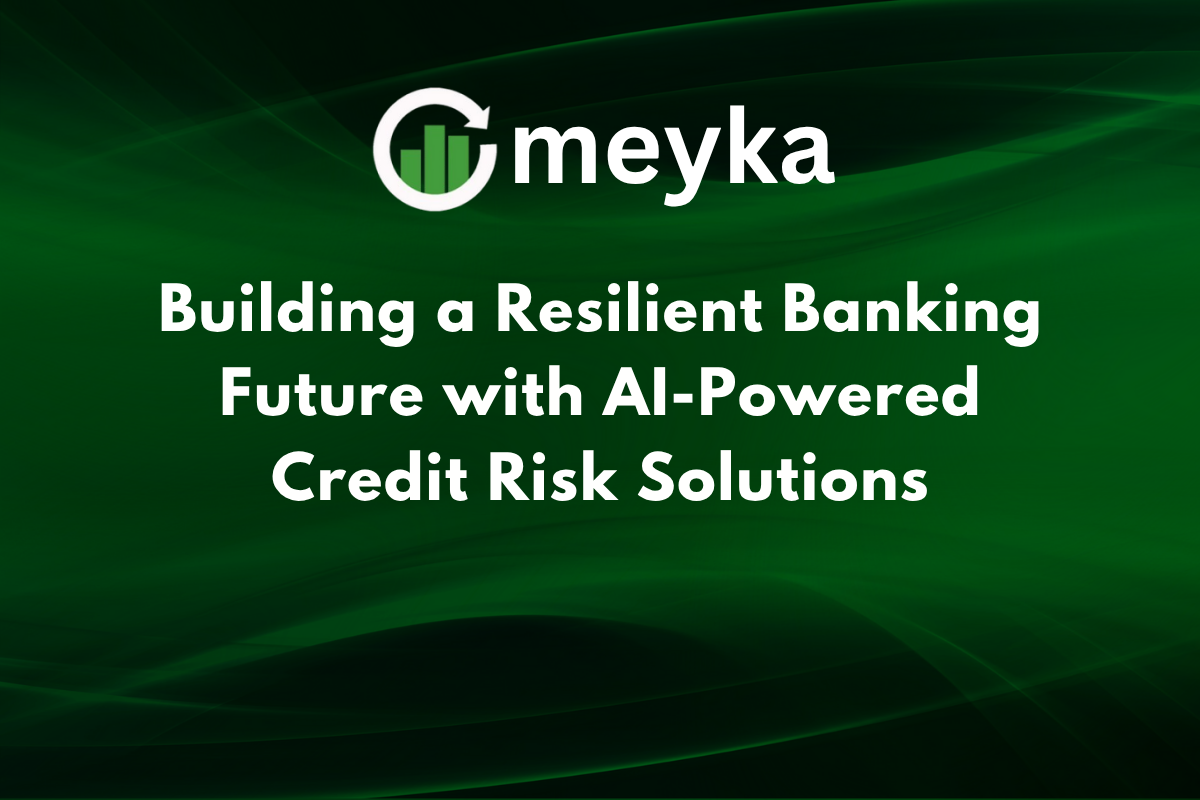Building a Resilient Banking Future with AI-Powered Credit Risk Solutions
The very bedrock of the global financial system rests upon a single, critical function: the extension of credit. For centuries, banks have built their empires and cemented their reputations on their ability to answer a deceptively simple question: “Is this person or business good for the money?” This delicate dance of credit risk assessment is the engine of economic growth, enabling everything from home ownership and education to business expansion and infrastructure development. Yet, this same function has also been the epicenter of the most catastrophic failures in financial history, from the savings and loan crisis to the 2008 global financial meltdown.
Today, the banking sector stands at a pivotal crossroads. In an era defined by economic volatility, rapid digital transformation, and an unprecedented explosion of data, the traditional models of credit risk are not just aging; they are becoming obsolete. The future of a stable, profitable, and genuinely inclusive banking sector hinges on its ability to evolve beyond these legacy frameworks. The path forward is clear: building a resilient banking future requires a strategic reinvention, powered by intelligent, adaptive, and sophisticated Artificial Intelligence (AI). This evolution centers on the adoption of a robust, AI-powered credit risk management solution for banks that can navigate the complexities of the modern world.
Part 1: The Cracks in the Foundation – Limitations of Legacy Credit Systems
To understand the transformative power of AI, we must first diagnose the critical shortcomings of the traditional credit risk model. For decades, banks have relied on a formulaic approach based primarily on historical financial data and standardized credit scores from bureaus. While this system provided a foundational layer of objectivity, it suffers from three fundamental flaws that render it inadequate for the 21st century.
1.1 The Rear-View Mirror Problem
Traditional credit models are inherently backward-looking. They assess a borrower’s future capacity to repay based almost exclusively on their past performance. In a dynamic, fast-paced global economy where job markets can transform overnight, industries can be disrupted, and personal circumstances can change in an instant, this creates significant and dangerous blind spots.
- The Thin-File Entrepreneur: A promising small business owner with strong future cash flow projections and a solid business model might be denied a crucial loan because they lack a long credit history.
- The Over-Leveraged Consumer: Conversely, a consumer with a long credit history but multiple maxed-out credit lines might be deemed “low-risk” by a traditional model until the moment they suddenly default, offering little time for the bank to react.
1.2 The Financial Exclusion Crisis
Perhaps the most significant social and economic failure of traditional models is their role in systemic financial exclusion. They create a class of “credit invisibles”—millions of individuals and businesses who are financially responsible but are locked out of the formal system because they don’t fit the conventional mold.
This group includes:
- Young adults are just starting their financial journeys.
- New immigrants without a domestic credit history.
- Individuals in underserved communities who rely on cash-based economies.
- Small businesses with limited formal financial track records.
This is not merely a social equity issue; it represents a massive, untapped economic opportunity for banks that can accurately assess this segment.
1.3 Operational Inefficiency and Customer Friction
The manual, document-intensive processes associated with traditional underwriting are slow, costly, and frustrating. Loan officers spend countless hours gathering, verifying, and analyzing paper-based financial statements, tax returns, and pay stubs. This leads to:
- High Operational Costs: Significant manpower is dedicated to routine data processing.
- Long Turnaround Times: Approval processes that stretch into weeks, causing customer anxiety and lost opportunities.
- Poor Customer Experience: In a world conditioned by the instant gratification of digital services, a sluggish loan application process is a sure way to lose customers to nimbler fintech competitors and digital-native banks.
Part 2: The AI Revolution – A New Paradigm for Credit Assessment
Artificial Intelligence, particularly machine learning (ML) and deep learning, is dismantling these limitations brick by brick. It introduces a new paradigm that is predictive, holistic, and dynamic, shifting the focus from “What did you do?” to “What are you likely to do?”
2.1 Unleashing Predictive Power with Alternative Data
The core of AI’s superiority lies in its ability to process and find patterns in vast, unstructured datasets far beyond the scope of a traditional credit report. This “alternative data” provides a nuanced, 360-degree view of an applicant’s financial health and behavior.
For retail banking, this can include:
- Consistent utility and telecom bill payments.
- Rental payment history.
- Cash flow analysis from bank transaction data (e.g., income vs. spending habits).
- Educational and professional qualifications.
For commercial banking, AI can analyze:
- Real-time cash flow statements from linked business accounts.
- Sentiment analysis from news articles and social media about the company.
- Supply chain robustness and counterparty risk.
- Geospatial data for retail businesses (e.g., foot traffic).
By processing thousands of these data points, ML models can identify complex, non-linear correlations that are invisible to human analysts or linear regression models. This allows for a much more accurate prediction of default probability, often identifying early warning signs of financial stress months before they would ever impact a traditional credit score.
2.2 Dynamic, Real-Time Risk Monitoring and Proactive Intervention
AI transforms the lender-borrower relationship from a static, point-in-time assessment to a dynamic, ongoing partnership. A modern credit risk management solution for banks enables continuous monitoring of the entire loan portfolio.
This capability allows for:
- Proactive Intervention: If the system detects a pattern signaling financial distress—such as a sudden drop in account balance, a missed utility payment, or negative industry news for a corporate client—it can automatically flag the account. This enables the bank’s relationship managers to reach out proactively with offers for payment plan restructuring, temporary forbearance, or financial counseling. This approach helps salvage the relationship, protects the bank’s assets, and provides a safety net for the customer.
- Portfolio-Level Resilience: Banks can monitor macroeconomic shifts and their potential impact on specific segments of their portfolio (e.g., the hospitality industry during a travel downturn), allowing for strategic, pre-emptive risk mitigation.
2.3 Hyper-Personalization and the End of One-Size-Fits-All Lending
By building a comprehensive, multi-dimensional profile of each applicant, AI enables a shift from standardized loan products to hyper-personalized financial offerings. This is the key to unlocking both superior customer experience and greater financial inclusion.
- Tailored Financial Products: Loan terms, interest rates, and credit limits can be dynamically calibrated to an individual’s or business’s unique risk profile and potential. A reliable gig economy worker, for instance, could be offered a loan based on their consistent earning pattern rather than a traditional employment contract.
- Unlocking New Markets: The ability to underwrite “thin-file” customers confidently allows banks to tap into the vast, underserved market of credit-invisible individuals and small businesses. This is not about lowering standards; it’s about using superior technology to more accurately identify creditworthiness that was always there, just not visible through a traditional lens.
Part 3: Building Organizational Resilience – The Tangible Benefits of AI Adoption
Implementing AI-powered credit risk is not merely a technological upgrade; it is a strategic initiative that builds resilience and competitive advantage across the entire organization.
- Enhanced Profitability and Sustainable Growth: By making finer distinctions between low-risk and high-risk borrowers, banks can significantly reduce their charge-off rates and non-performing assets (NPAs). Simultaneously, the ability to safely approve more applicants from a broader pool allows for the expansion of the loan book without a corresponding increase in risk. This dual benefit of reduced losses and increased safe revenue directly boosts the bottom line.
- Operational Excellence and Scalability: AI automates the most labor-intensive aspects of the underwriting process. This drastically cuts down processing times—from weeks to minutes or hours in many cases—and significantly reduces operational costs. Loan officers are liberated from administrative tasks to focus on complex cases, customer advisory services, and building deeper relationships. This newfound efficiency allows banks to scale their lending operations exponentially without a proportional increase in overhead.
- Strategic Agility and Future-Proofing: The economic and regulatory environment is in constant flux. AI models are inherently more adaptable than legacy systems. They can be continuously retrained on new data to respond to emerging risks, whether from a global pandemic, a disruptive new technology, or new regulatory reporting requirements. This agility makes the institution fundamentally more resilient to external shocks.
Part 4: Charting the Course – A Strategic Blueprint for Implementation
The journey to becoming an AI-powered institution requires careful planning and execution. It is a cultural shift as much as a technological one.
- Lay a Solid Data Foundation: AI is only as powerful as the data it consumes. The first step is investing in robust data governance and management infrastructure. Banks must break down internal data silos and establish secure pipelines for integrating high-quality external and alternative data sources.
- Prioritize Explainable AI (XAI): The “black box” problem—where an AI’s decision-making process is opaque—is a major hurdle for regulators and for building customer trust. Selecting and developing models that provide clear, auditable reasons for their credit decisions is non-negotiable for ensuring compliance with fair lending laws and maintaining ethical standards.
- Embrace a Human-in-the-Loop Model: The goal of AI is not to replace human judgment but to augment it. The most effective systems are those where AI handles high-volume, data-intensive analysis and pattern recognition, while human experts provide strategic oversight, handle complex exceptions, and manage nuanced customer relationships.
- Adopt a Phased, Iterative Approach: A “big bang” enterprise-wide rollout is fraught with risk. A more successful strategy involves starting with a pilot program—perhaps for a specific product like personal microloans or a specific customer segment like small business banking. This allows the bank to demonstrate value, fine-tune the models, and build internal confidence before a broader expansion.
Conclusion:
The mission of credit risk management has evolved. The goal is no longer merely to avoid bad loans; it is to confidently and efficiently identify and foster good ones, thereby fueling economic growth and financial inclusion. The integration of a sophisticated, AI-powered credit risk management solution for banks represents the most significant paradigm shift in lending since the invention of the credit score.
It empowers financial institutions to move from a defensive, reactive posture to a proactive, growth-oriented, and inclusive strategy. By harnessing the predictive intelligence of AI, banks can construct a foundation that is not only more profitable and operationally efficient but also fundamentally more resilient, adaptable, and equitable. The future of banking is not just digital; it is intelligent. And that intelligent future is being built today, one data point, one accurate prediction, and one confidently served customer at a time.
Disclaimer:
The content shared by Meyka AI PTY LTD is solely for research and informational purposes. Meyka is not a financial advisory service, and the information provided should not be considered investment or trading advice.






